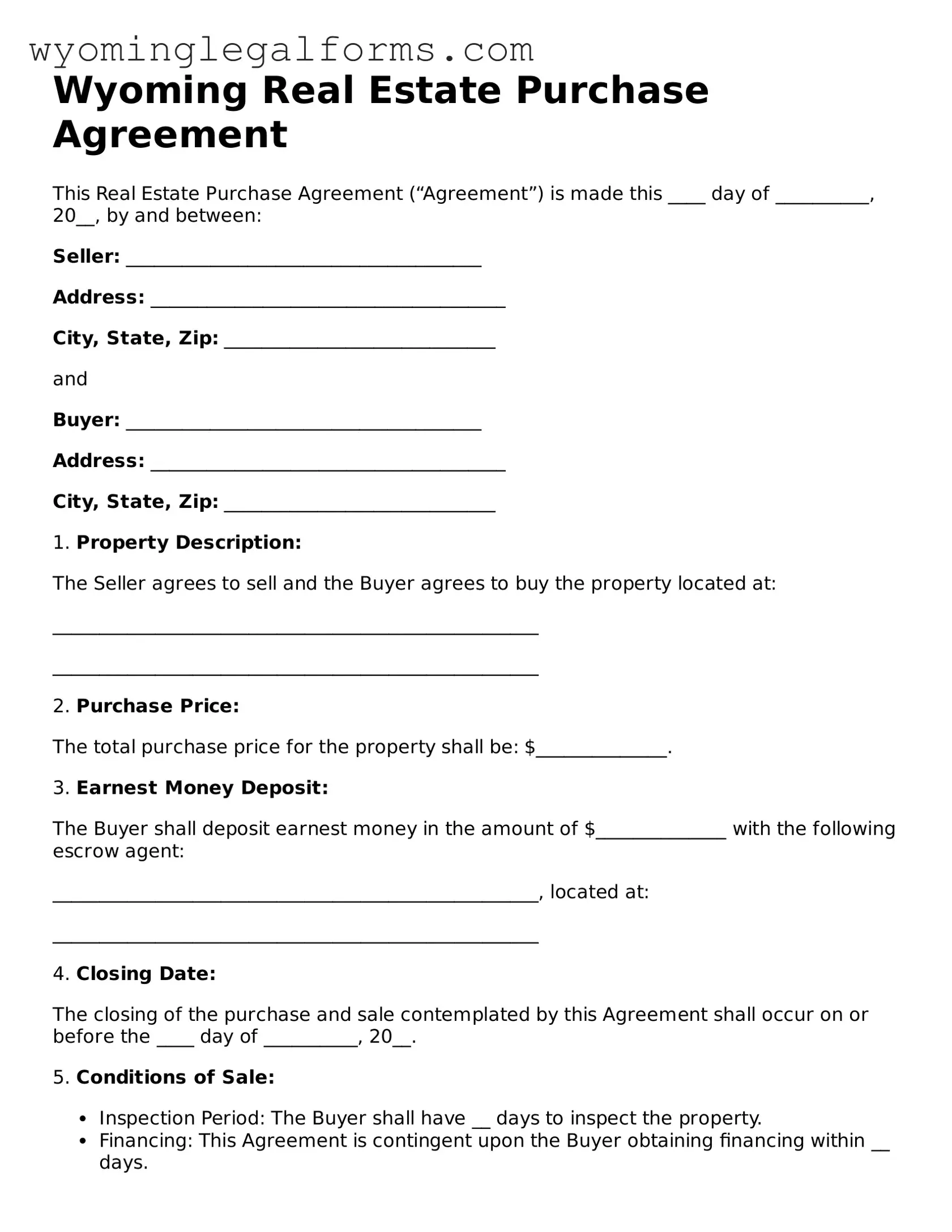What is a Wyoming Real Estate Purchase Agreement?
A Wyoming Real Estate Purchase Agreement is a legally binding contract between a buyer and a seller for the sale of real property. This document outlines the terms and conditions of the sale, including the purchase price, financing details, and any contingencies that must be met before the transaction can be completed.
What key elements should be included in the agreement?
The agreement should include essential details such as the names of the buyer and seller, the legal description of the property, the purchase price, the closing date, and any contingencies, such as financing or inspection requirements. Additionally, it should specify any personal property included in the sale, like appliances or fixtures.
Is the Wyoming Real Estate Purchase Agreement customizable?
Yes, the agreement can be customized to fit the specific needs of both parties. While there are standard provisions that should be included, buyers and sellers can negotiate terms that reflect their unique circumstances, such as additional contingencies or specific timelines.
Do I need a lawyer to draft a Real Estate Purchase Agreement in Wyoming?
While it is not legally required to have a lawyer draft the agreement, consulting with a legal professional is highly advisable. A lawyer can help ensure that the agreement complies with Wyoming laws and adequately protects your interests, especially if the transaction involves significant sums of money or complex issues.
What happens if either party fails to meet the terms of the agreement?
If either party fails to meet the terms outlined in the agreement, it may result in a breach of contract. The non-breaching party may have several options, including seeking damages, enforcing the contract, or terminating the agreement. The specific remedies available will depend on the circumstances and the terms of the contract.
Can the agreement be terminated after it has been signed?
Yes, the agreement can be terminated under certain conditions. If the parties include contingencies in the contract, such as failing a home inspection or not securing financing, either party may terminate the agreement without penalty. However, if one party simply wishes to back out without a valid reason, they may face legal consequences.
How does the closing process work in Wyoming?
The closing process in Wyoming involves several steps. Once all contingencies are satisfied, a closing date is set. During the closing, the buyer will typically provide the funds, and the seller will transfer the title of the property. Both parties will sign various documents, and the transaction will be recorded with the county clerk’s office to finalize the sale.
Are there any specific disclosures required in Wyoming?
Yes, Wyoming law requires sellers to provide certain disclosures to buyers. This includes information about the condition of the property, any known defects, and any other material facts that could affect the buyer’s decision. These disclosures help ensure that buyers make informed decisions before completing the purchase.
